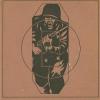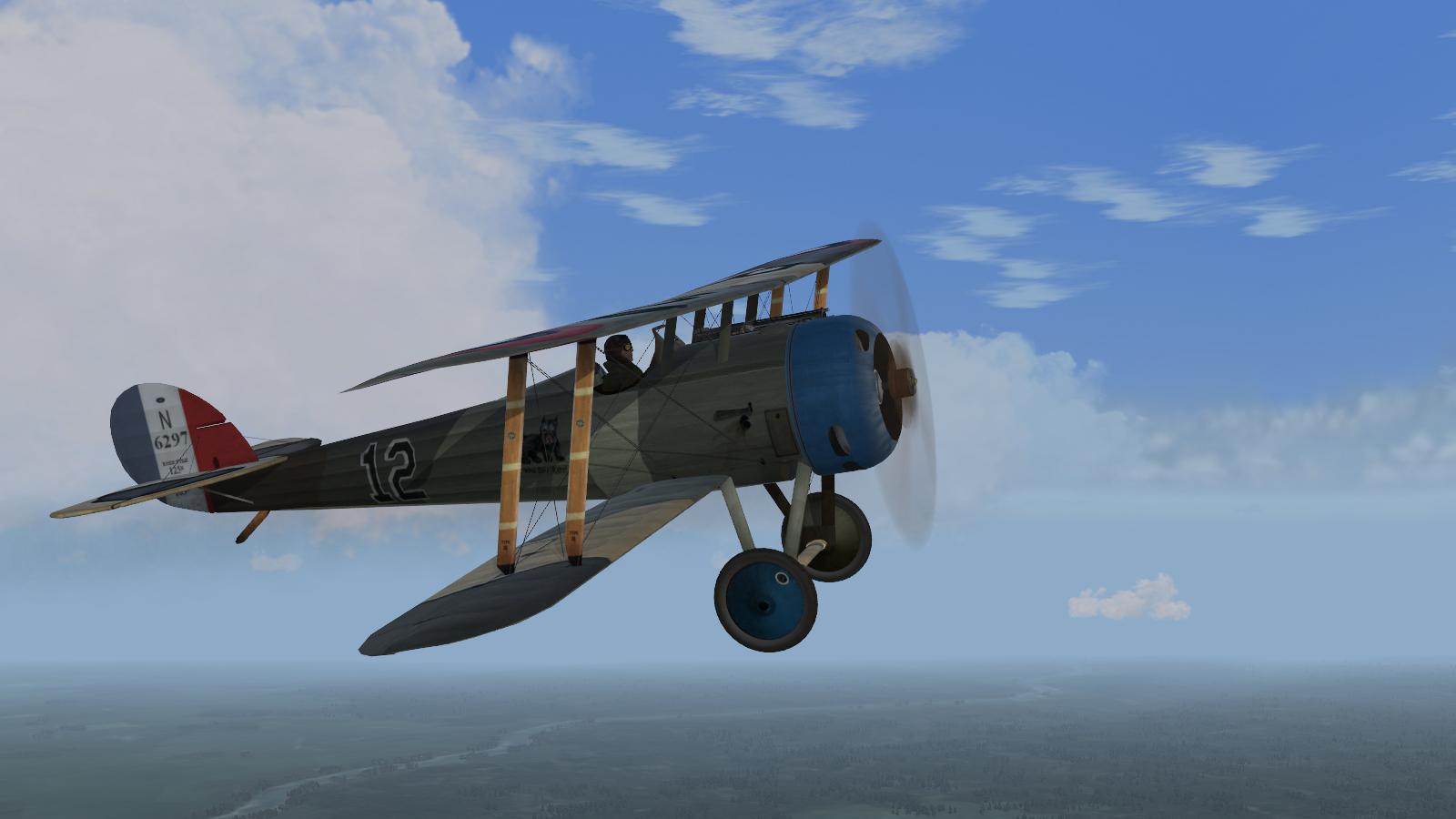Search the Community
Showing results for tags 'nieuport 28'.
Found 2 results
-
From the album WOFF
-
The other nationalities in Wings Over Flanders Fields Part 2 - the US Army Air Service The plane For this WOFF campaign mission with the US Army Air Service, I should perhaps have chosen the SPAD XIII, instead of 'yet another Nieuport'. But this Nieuport is different. For starters, the Nieu.28 has been one of my personal favourites, from the mid-1960s when I built Revell's little 1/72 kit in their new range of WW1 fighters, great models for their day, with classic Brian Knight box art. And while the 28 retained the rotary engine of its predecessors, it replaced the weak single spar lower wing and V-struts with a more conventional, but no less elegant, wing structure. The aircraft may have been infamous for shedding the plywood leading edge of the upper wing and attached fabric on pulling out from a power dive. Sometimes, unburnt petrol collected in the engine cowl went on fire. But apparently, unlike the lower wing failures of the V-strutted Nieuports, these issues, though alarming, were rarely if ever fatal. And the Nieu.28 was fast, agile and fairly reliable - certainly more so than the SPAD XIIIs which replaced them, the geared Hispano-Suiza engine proving so unreliable that French units equipped with the XIII reportedly kept a stock of SPAD VIIs to maintain flying strength. Besides, I had previously flown a series of comparative mission reports featuring the Nieu.28 in First Eagles 2, Rise of Flight, Over Flanders Fields and IL-2 Dark Blue World 1916 (here). So with WOFF having supplanted OFF, this mission report serves nicely, if I may say so, to bring that series up-to-date. The unit I elected to fly with the first unit to receive the Nieuport 28, the 95th Pursuit Squadron, the 'Kicking Mules'. Held back for additional gunnery training, the unit wasn't in action until the beginning of May 1918, by which time fellow First Pursuit Group unit the 94th 'Hat in the Ring' Pursuit had already seen some action. Here's the WOFF squadron board for the 95th; many of the named pilots are recognisably those who really flew with the squadron at this time. We are based at Toul, not far from the shattered battlefield of Verdun, scene of one of the war's most awful battles, during 1916, when the French army fought the Germans to a standstill in a desperate and costly but successful defensive effort. Two years later the front here is relatively quiet, although further north in the British sector, the Germans have unleashed their spring offensive in a last-gasp effort to turn the tide and win the war in the west. The mission Here's the mission briefing. We're putting up two flights as escort to a reconnaisance by three French Sopwith 1 1/2 Strutters from Escadrille Sop 43, flying down from Beauzee sur Aire. This type was already obsolescent when the French started using it in large numbers during 1917, to replace even older 'pusher' types. At this point in the war, the French Strutters were in the course of being replaced themselves, generally by the excellent Breguet 14. Here were are lined up and good to go. I'm flying with a single flight-mate, with the squadron's other flight on 'top cover'. I have chosen the 'skin' of Lt Quentin Roosevelt, the President's son, who had the dubious distinction of being pictured on German postcards lying dead and broken beside his crashed Nieuport, after being shot down in July. If this is one of the 'skins' I've copied over from OFF, it works fine; the long grey fillet atop the rear fuselage is not a glitch, it was on the real aircraft. After take-off I took it easy until my number two had caught up, then sped off to the rendez-vous point with the two-seaters, climbing hard. The skies were an unbroken blue, visibility good but hazy at longer range. It wasn't long before I spotted them; three Strutters with the distinctive French roundels, all in un-camouflaged clear doped linen finish, which made them relatively easy to see from above, against the ground. By this time I had lost sight of the squadron's other flight but trusted they would be up and behind us, somewhere. In turn, I took my own station above and behind the Sopwiths, weaving left and right to keep station while maintaining my airspeed. Our route was a long slanting one which took us back and forward over the zig-zagging front lines. All seemed peaceful, until I heard from somewhere close by, above the noise of my own motor, the sound of an aero-engine revving and stuttering. Looking back, the cause was not hard to see. My flight-mate's engine was on fire! There had been some Archie fire earlier but the skies were now clear of both AA bursts and enemy aircraft. So I took this to be one of the random failures WOFF simulates (unless you have it turned off) - perhaps one of those fires from pooling petrol in the cowling. Despite the dark smoke and the pyrotechnics, my buddy seemed under control, and quickly turned back towards friendly territory. Though I was relieved at the prospect my flight-mate would get away with it, I was rather less happy at the thought of a long solo escort flight. Suddenly, I felt very lonely. I'd have felt a whole lot happier if I could have seen the other flight of Nieuports, but wherever they were, they were invisible to me. Nothing else for it. I flew on, zig-zagging behind and above the three Sopwiths, varying my turning points and keeping an even more careful look-out. But the skies around us remained clear, apart from some intermittent Archie. The German gunners must have fancied a challenge, for instead of targeting the straight-flying two-seaters, when they did cut loose, it generally seemed to be at my Nieuport. This did no damage but it certainly made me feel all the more exposed and vulnerable. The flight stretched on interminably. Whether it's Silent Hunter 2/SH3 or IL-2, I've never much liked time compression. The 'warp' feature of CFS/CFS2 I did like, though not quite so well when in CFS3 it changed to very rapid time acceleration. At least it dropped you out if enemies were near, which WOFF's current time acceleration 'warp replacement' does not. Best of all is the 'next encounter' facility in European Air War and Strike Fighters/First Eagles. But without it auto-quitting when contact was imminent, and especially up on my own, I was reluctant to speed things up. I flew on in real time. The tension left little room for boredom! Nearing their turning point for home, the Sopwiths flew past two of Verdun's large forts, both set in the sea of shell-cratered mud that stretched all around and as far as Verdun itself to the south-west. I urged them on. Since my flight-mate's departure, any desire on my part for a fight with the Boche had evaporated. My sole concern now was to see my charges as far as their objective, watch them make that turn for home, then see them safely over the lines. And then get myself home in one piece. Victory claims and medals could wait for another day! Finally, the Sopwiths turned left and headed back towards friendly territory, just a short distance to the south. I turned with them. The mission had ended uneventfully, but I had no regrets. The relief of the anxiety I'd felt since losing my flight-mate was palpable. The satisfaction of a mission accomplished more than made up for the lack of air combat. I'd got my charges back safely! But not quite. Looking back not a moment too soon, I was appalled to see at least three Albatros scouts with candy-striped tails breaking formation and peeling off to attack. Worse if anything, they looked to be after my Sopwiths! Groaning at being so nearly home free and now having to fight at bay and badly outnumbered, I nosed down and around, and cut them off. An aggressive defence seemed the best policy. At any rate, they were not going to get my Sopwiths! Get stuck into them, give them plenty to keep themselves occupied, then dive for home at the first opportunity. And I would do my level best to get one of the Boche first, if I possibly could. This seemed to work quite well. The enemy pilots appeared to forget about the Strutters, evidently intent on shooting me down first. I was soon in the middle of a stiff little dogfight with the three Albatros scouts, hurling my machine about the sky, taking snap-shots each time an Albatros sailed across my path. Likewise, the Boche were taking shots at me, whenever they got the chance. I tried to edge the fight towards my own side of the Lines, ready to dive away for safety when the right moment came. But it never did. Instead, there was a horrible rending and ripping sound as the top left wing of my evidently over-stressed aircraft tore off! Down she went, straight down. I throttled back but the flight controls seemed not to be answering. The end came suddenly, inevitably. To add insult to injury, what I was quite certain was a structural failure was credited to enemy action; either way one of the Boche will doubtless be putting in a claim for ein Amerikaner kaput. Given that the real-life Nieuport 28's structural issues seemed to have killed few if any pilots, I was a little miffed that my tenacity and at the end, my rather courageous solo defence of the Sopwiths should end thus. I hope mes camarades Francais in the two-seaters will carry with them back to their base a suitably glowing account of the brave end of the pilote Américain courageux who saw them safely home at the expense of his own virtual life. Perhaps a posthumous Légion d'Honneur will be in order?
- 4 replies
-
- 1
-

-
- nieuport 28
- wings over flanders fields
-
(and 1 more)
Tagged with:


